Why is generative AI sought after by various industries?
Generative AI is a type of human artificial intelligence technology that can generate various types of content, including text, images, audio and synthetic data. So what is artificial intelligence? What is the difference between artificial intelligence and machine learning?
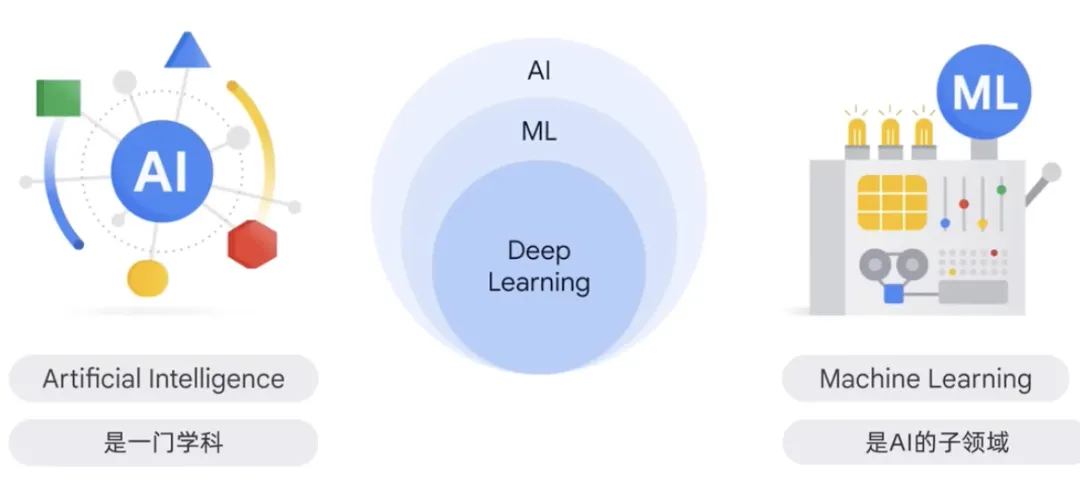
Artificial intelligence is the discipline, a branch of computer science, that studies the creation of intelligent agents that can reason, learn, and execute autonomously Action system.
At its core, artificial intelligence is concerned with the theories and methods of building machines that think and act like humans. Within this discipline, machine learning ML is a field of artificial intelligence. It is a program or system that trains a model based on input data. The trained model can make useful predictions from new or unseen data derived from the unified data on which the model was trained.
Machine learning gives computers the ability to learn without explicit programming. The two most common types of machine learning models are unsupervised and supervised ML models. The main difference between the two is that for supervised models we have labels, labeled data is data with labels like name, type or number and unsupervised data is data without labels.
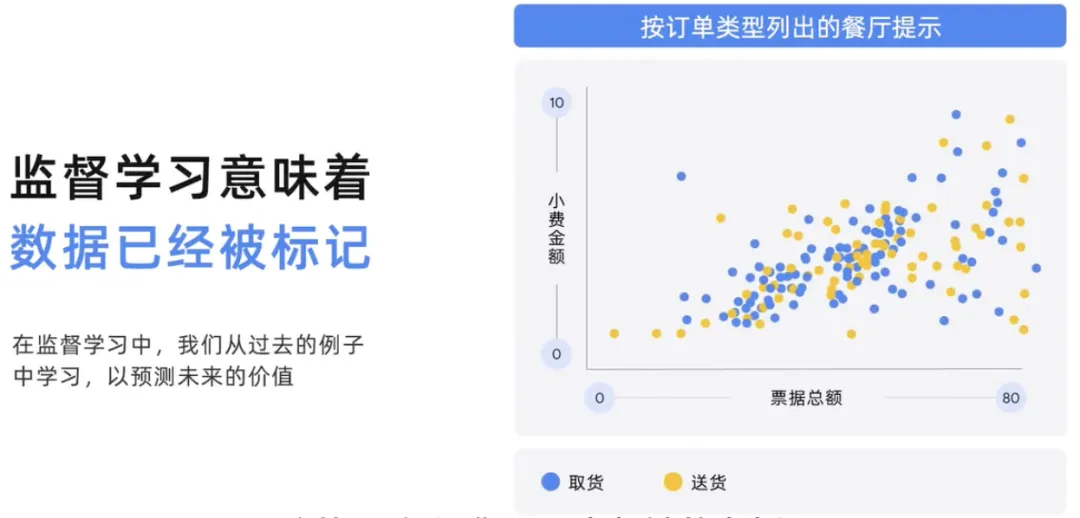
#This figure is an example of a problem that a supervised model might try to solve.
For example, let’s say you are a restaurant owner and you have historical data on bill amounts, how much tips different people gave based on the order type, whether it was pickup or delivery based on the order type To so many different people. In supervised learning, a model learns from past examples to predict future values. So the model here uses the total bill amount to predict future spending based on whether the order is for pickup or delivery.
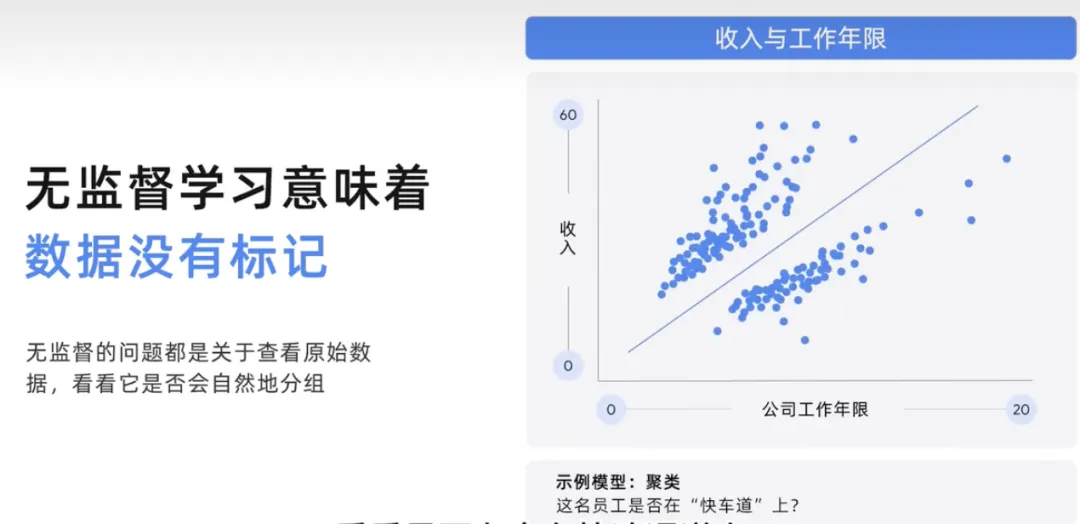
This example shows a problem situation that an unsupervised model might solve, where you want to look at tenure and income, and then group employees to get clusters and see if anyone On the fast track. The unsupervised problem is all about looking at the raw data and seeing if it groups naturally. Let's go a little deeper and show this graphically.
The above concepts are the basis for understanding generative AI.
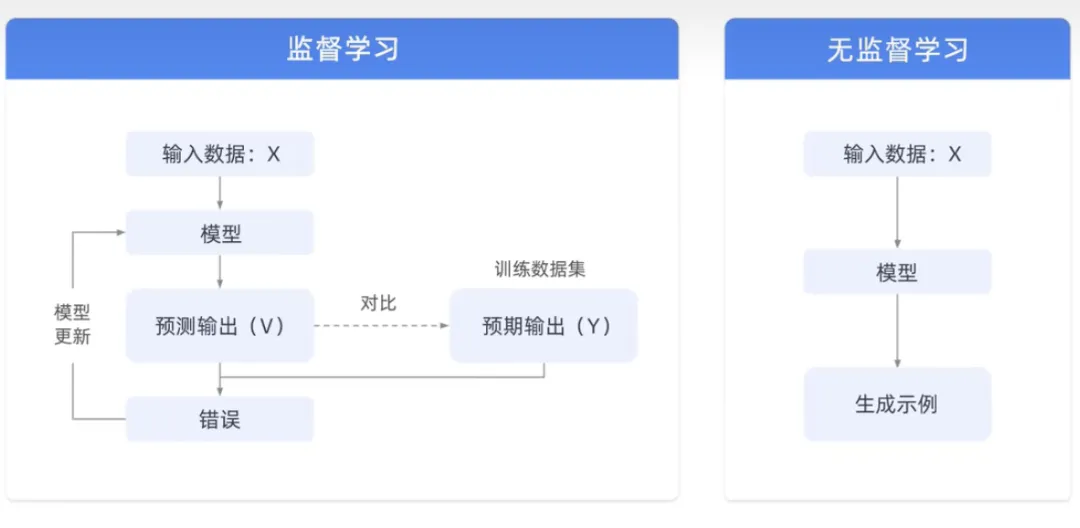
In supervised learning, test data values are fed into a model, which outputs a prediction, and that prediction is compared with the training data used to train the model Compare.
If the predicted test data value and the actual training data value are far apart, it is called an error, and the model will try to reduce this error until the predicted and actual values are closer.

We have explored the differences between artificial intelligence and machine learning, supervised learning and unsupervised learning. So, let’s briefly explore deep learning.
While machine learning is a broad field that encompasses many different techniques, deep learning is a type of machine learning that uses artificial neural networks, allowing them to process more complex patterns than machine learning.
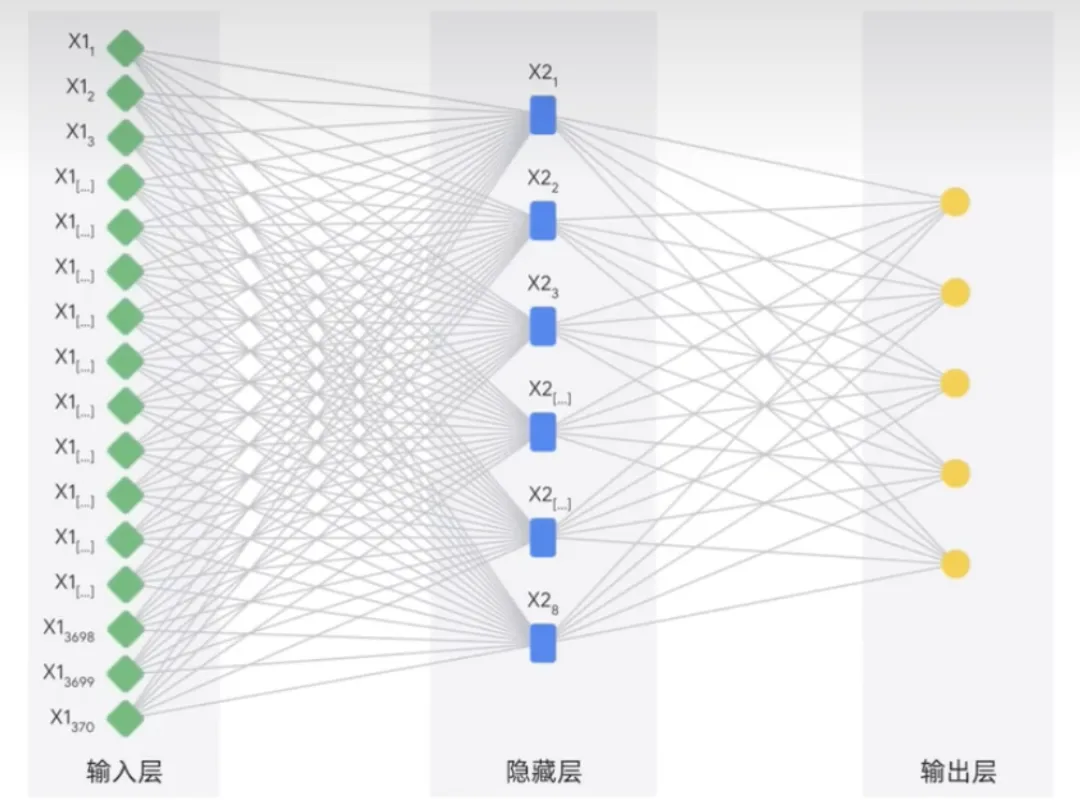
Artificial neural networks are inspired by the human brain. They are composed of many interconnected nodes or neurons that can be Process data and make predictions to learn to perform tasks.
Deep learning models usually have multiple layers of neurons. This allows them to learn more complex patterns than traditional machine learning models. Neural networks can work with both labeled and unlabeled data, which is called semi-supervised learning. In semi-supervised learning, a neural network is trained on a small amount of labeled data and a large amount of unlabeled data. Labeled data helps the neural network learn the basic concepts of the task. And unlabeled data helps neural networks generalize to new examples.
position in this artificial intelligence discipline, which means using artificial neural networks, labeled and unlabeled data can be processed in supervised, unsupervised and semi-supervised methods. Large language models are also a subset of deep learning, deep learning models or machine learning models in general.

Deep learning can be divided into two types: discriminative and generative. A discriminative model is a model used to classify or predict the labels of data points. Discriminative models are typically trained on datasets of labeled data points. They learn the relationship between the features and labels of data points, and once the discriminative model is trained, it can be used to predict the labels of new data points. The generative model generates new data instances based on the learned probability distribution of existing data, so the generative model produces new content.
The generative model can output new data instances, while the discriminative model can distinguish different types of data instances.
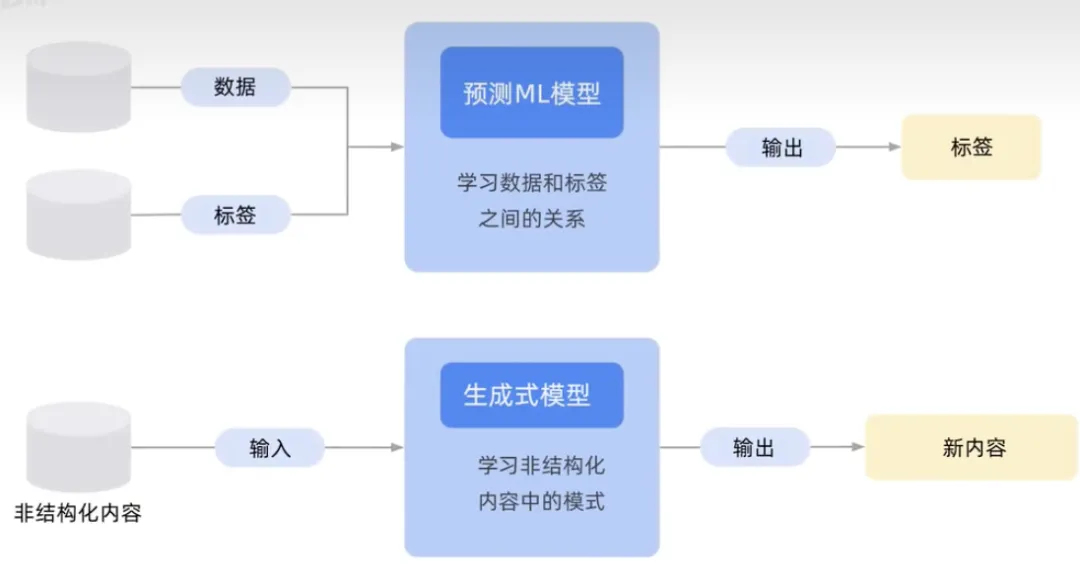
This figure shows a traditional machine learning model, the difference is the relationship between the data and the labels, or what you want to predict. The bottom image shows a generative AI model trying to learn content patterns in order to generate and output new content.
When the output outer label is a number or probability, it is non-generative AI, such as spam and non-spam. When the output is natural language, it is generative AI, such as speech, text, images and videos.

The model output is a function of all inputs, and if Y is a number, such as predicted sales, then it is not GenAI. If Y is a sentence, it's like defining sales. It is generative in that questions elicit textual responses. His responses will be based on all the massive amounts of big data the model has been trained on.
In summary, the traditional, classic supervised and unsupervised learning process uses training code and labeled data to build the model. Depending on the use case or problem, the model can give you predictions, it can classify or cluster something, use this force to show how robust the process that generated it is.
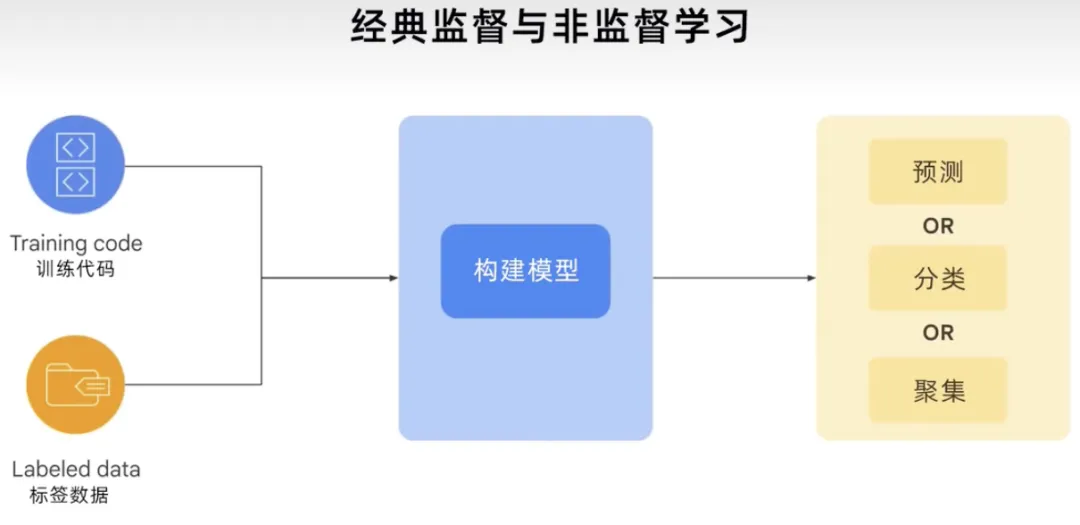
The GenAI process can obtain training code, labeled data and unlabeled data of all data types, build a basic model, and then the basic model can generate new content . Such as text, code, images, audio, video, etc.
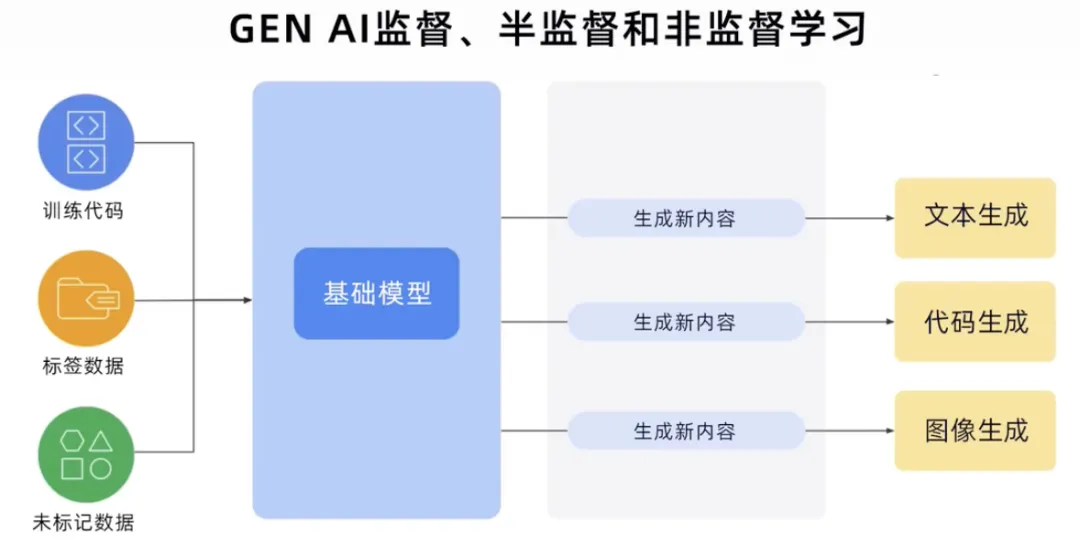
From traditional programming to neural networks to generative models, we have come a long way. In traditional programming, we used to have to code rules for distinguishing cats. The type is an animal, with 4 legs, 2 ears, fur, etc.
In the wave of neural networks, we can feed the network pictures of cats and dogs. and asked if it was a cat. He will predict a cat. In the generative AI wave, we, as users, can generate our own content.
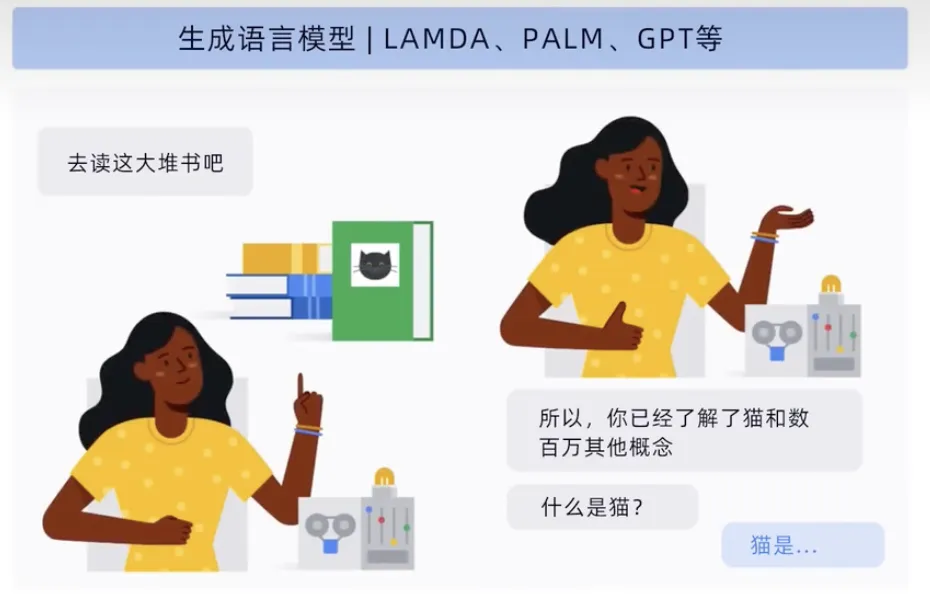
language model or conversational application language model. Get very large data from multiple sources on the internet. Build basic language models that can be used simply by asking questions. So, when you ask him what a cat is, he can tell you everything he knows about cats.
Now let’s define, what is generative artificial intelligence?
GenAI is a type of artificial intelligence that creates new content based on knowledge learned from existing content. The process of learning from existing content is called training. And create a statistical model when a prompt is given, use that model to predict what the expected response might be, and generate new content.
Essentially, it learns the underlying structural content of the data and can then generate new samples that are similar to the training data. As mentioned before, a generative language model can take what it has learned from the examples it was shown and create something entirely new based on that information.
Large language models are a type of generative artificial intelligence because they generate novel text combinations in the form of naturally-sounding language, generate image models, take images as input, and can output text , another image or video. For example, under Output Text you can get visual Q&A, while under Output Image generate image completion, and under Output Video generate animation.
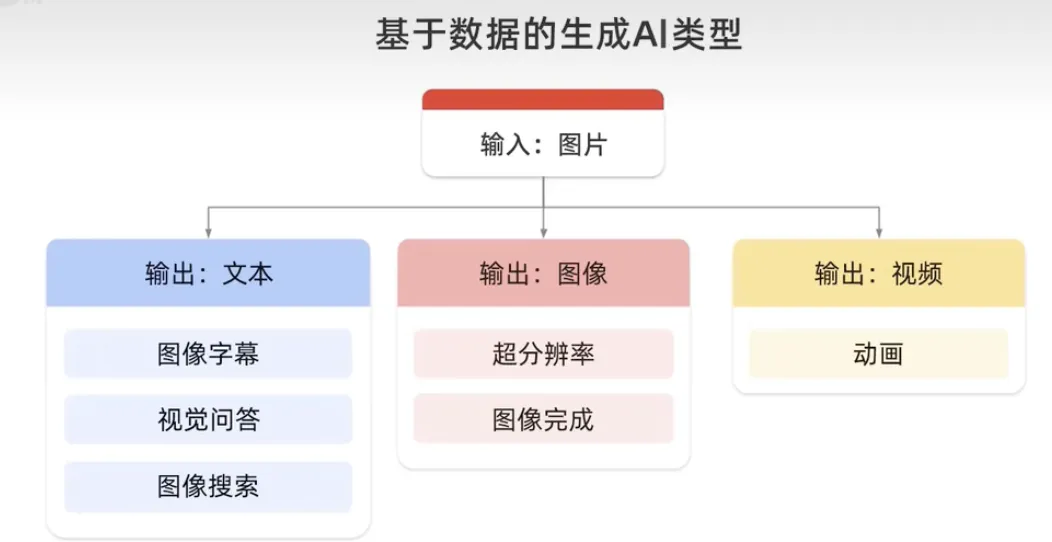
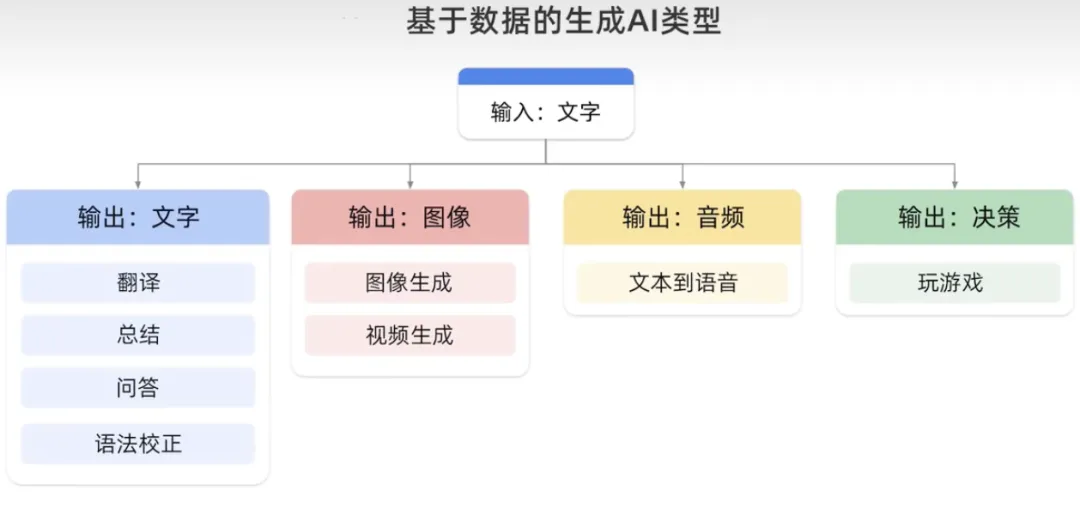
We have said that generative language models learn about patterns and language through training data, and then given some text, they predict what will happen next.
Generative language models are pattern matching systems, they learn patterns based on the data you provide them. Based on what he learned from the training data, he provides a prediction of how to complete the sentence. It was trained on large amounts of text data and was able to communicate in response to a variety of prompts and questions and generate human-like text.
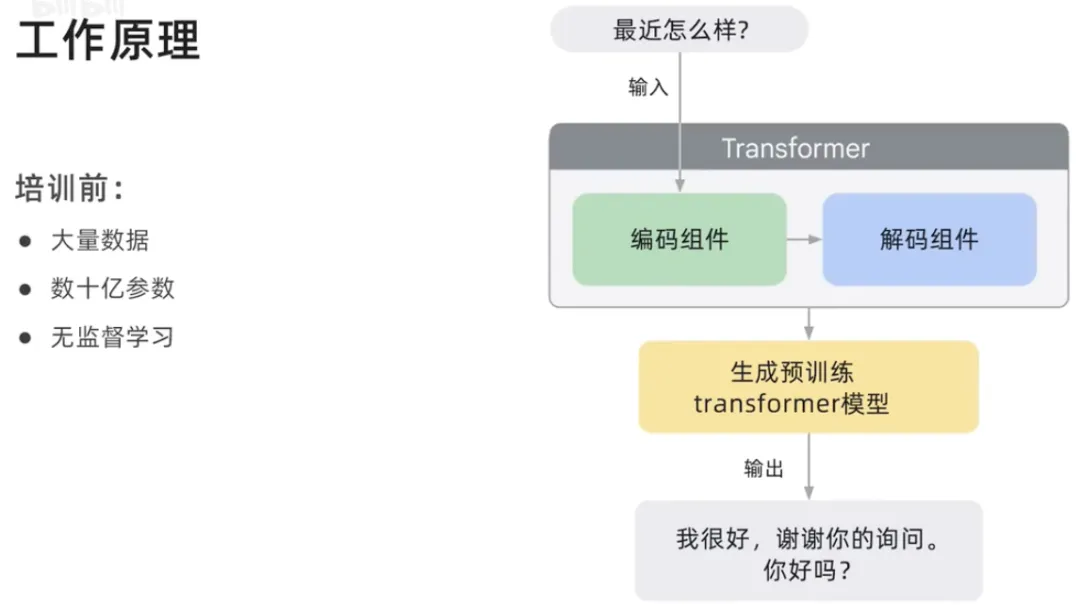
In the transformer, Hallucin is a word or phrase generated by the model, which is usually nonsense or grammatically incorrect. Hallucinations can be caused by a variety of factors, including the model not being trained on enough data, or the model being trained on noisy or dirty data, or not giving the model enough context, or not giving the model enough constraints. .

They can also make the model more likely to generate incorrect or misleading information, such as miscellaneous TPT3.5 which may sometimes generate information that is not necessarily correct. Prompt words are small pieces of text given as input to large language models. And it can be used to control the output of a model in a variety of ways.
Hint design is the process of creating hints that will produce the desired output content from a large language model. As mentioned before, LLM depends heavily on the training data you input. It learns by analyzing the patterns and structure of the input data. But by accessing browser-based prompts, users can generate their own content.

We have shown a roadmap for data-based input types, and here are the relevant model types.
Text-to-text model. Takes natural language input and generates text output. These models are trained to learn mappings between texts. For example, translation from one language to another.
Text to image model. Because text-to-image models are trained on a large number of images. Each image comes with a short text description. Diffusion is one method used to achieve this.

Text to video and text to 3D. Text-to-video models only generate video content from text input, which can be anything from a single sentence to a complete script. The output is video-like text corresponding to the input text to a 3D model that generates three-dimensional objects corresponding to the user's textual description. This could be used for games or other 3D worlds, for example.
Text to task model. Once trained, it can perform defined tasks or actions based on text input. This task can be extensive. For example, answer a question, perform a search, make a prediction, or take some action. Text-to-task models can also be trained to guide queries or make changes to documents.
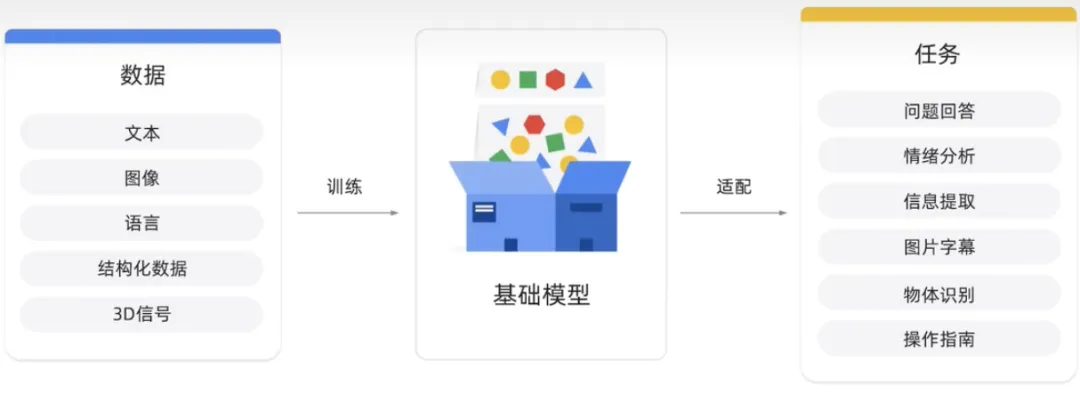
#The basic model is a large AI model pre-trained on a large amount of data. The aim is to adapt or fine-tune a variety of downstream tasks such as sentiment analysis, image, captioning and object recognition.
Fundamental models have the potential to revolutionize many industries, including healthcare, finance, and customer service, where they can be used to detect predictions and provide personalized customer support. OpenAI provides a basic model source language, including those for chat and text.
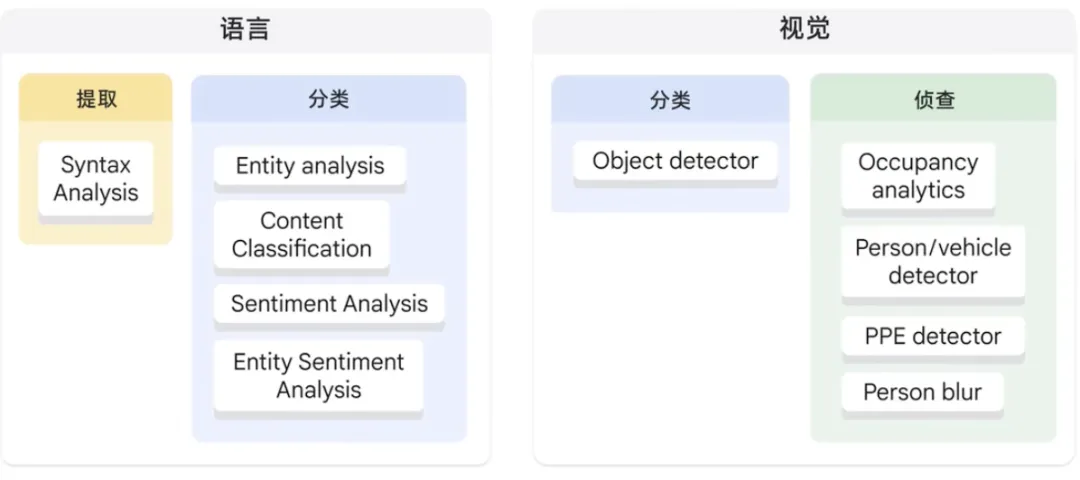
The basic vision model includes stable diffusion, which can effectively generate package quality images from text descriptions. Let's say you have a case where you need to gather information about how customers feel about your product or service.
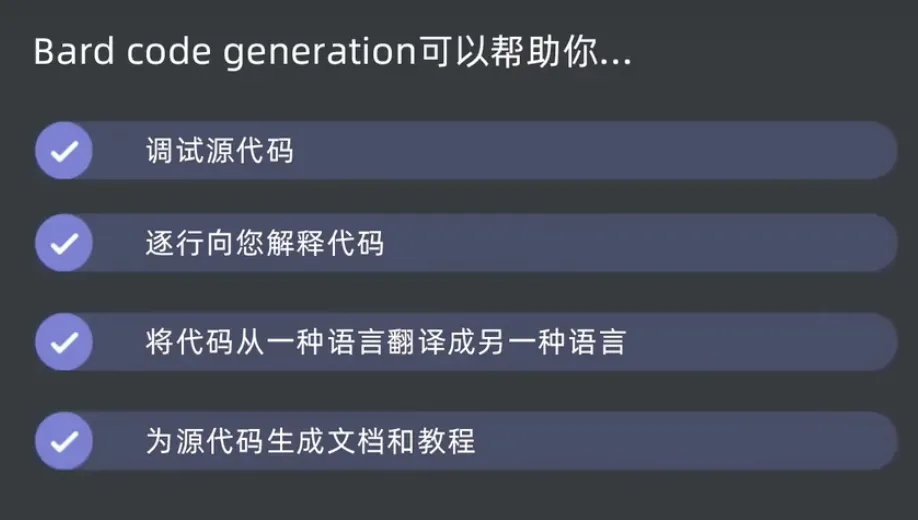
Generative AI Studio, from a developer's perspective, allows you to easily design and build applications without writing any code. It has a visual editor that makes it easy to create and edit application content. There is also a built-in search engine that allows users to search for information within the app.
There is also a conversational artificial intelligence engine that helps users interact with applications using natural language. You can create your own digital assistant, custom search engine, knowledge base, training app, and more.
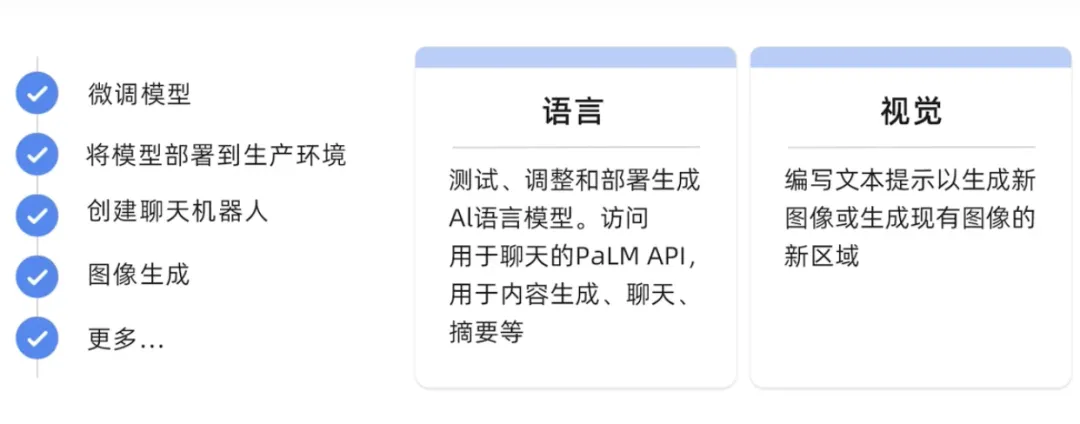
Model deployment tools help developers deploy models into production environments using a number of different deployment options. And model monitoring tools help developers monitor the performance of ML models in production using dashboards and many different metrics.
If generative AI application development is viewed as the assembly of a complex puzzle, each of the technical capabilities it requires, such as data science, machine learning, and programming, is equivalent to each piece of the puzzle.
It is already difficult for enterprises without technical accumulation to understand these puzzle pieces, and putting them together becomes an even more difficult task. But if there are services that can provide these traditional enterprises with weak technical capabilities with some pre-assembled puzzle pieces, these traditional enterprises can complete the entire puzzle more easily and quickly.
Judging from the actual situation in the domestic market, the development of generative AI is neither as optimistic as expected by practitioners chasing the trend, nor as pessimistic as described by naysayers.
Enterprise users pursue the robustness, economy, security and usability of applications. This is in line with the fact that generative AI such as large language models do not hesitate to spend high computing power costs in the training process to achieve higher capabilities. Completely different path.
A core issue behind this is that in the field of enterprise-level generative AI with greater imagination, the most important thing is not how powerful the large model is, but how it can evolve from a basic model to Specific applications in various fields, thereby empowering the development of the entire economy and society.
The above is the detailed content of Why is generative AI sought after by various industries?. For more information, please follow other related articles on the PHP Chinese website!

Hot AI Tools

Undresser.AI Undress
AI-powered app for creating realistic nude photos

AI Clothes Remover
Online AI tool for removing clothes from photos.

Undress AI Tool
Undress images for free

Clothoff.io
AI clothes remover

Video Face Swap
Swap faces in any video effortlessly with our completely free AI face swap tool!

Hot Article

Hot Tools

Notepad++7.3.1
Easy-to-use and free code editor

SublimeText3 Chinese version
Chinese version, very easy to use

Zend Studio 13.0.1
Powerful PHP integrated development environment

Dreamweaver CS6
Visual web development tools

SublimeText3 Mac version
God-level code editing software (SublimeText3)

Hot Topics
 Bytedance Cutting launches SVIP super membership: 499 yuan for continuous annual subscription, providing a variety of AI functions
Jun 28, 2024 am 03:51 AM
Bytedance Cutting launches SVIP super membership: 499 yuan for continuous annual subscription, providing a variety of AI functions
Jun 28, 2024 am 03:51 AM
This site reported on June 27 that Jianying is a video editing software developed by FaceMeng Technology, a subsidiary of ByteDance. It relies on the Douyin platform and basically produces short video content for users of the platform. It is compatible with iOS, Android, and Windows. , MacOS and other operating systems. Jianying officially announced the upgrade of its membership system and launched a new SVIP, which includes a variety of AI black technologies, such as intelligent translation, intelligent highlighting, intelligent packaging, digital human synthesis, etc. In terms of price, the monthly fee for clipping SVIP is 79 yuan, the annual fee is 599 yuan (note on this site: equivalent to 49.9 yuan per month), the continuous monthly subscription is 59 yuan per month, and the continuous annual subscription is 499 yuan per year (equivalent to 41.6 yuan per month) . In addition, the cut official also stated that in order to improve the user experience, those who have subscribed to the original VIP
 Context-augmented AI coding assistant using Rag and Sem-Rag
Jun 10, 2024 am 11:08 AM
Context-augmented AI coding assistant using Rag and Sem-Rag
Jun 10, 2024 am 11:08 AM
Improve developer productivity, efficiency, and accuracy by incorporating retrieval-enhanced generation and semantic memory into AI coding assistants. Translated from EnhancingAICodingAssistantswithContextUsingRAGandSEM-RAG, author JanakiramMSV. While basic AI programming assistants are naturally helpful, they often fail to provide the most relevant and correct code suggestions because they rely on a general understanding of the software language and the most common patterns of writing software. The code generated by these coding assistants is suitable for solving the problems they are responsible for solving, but often does not conform to the coding standards, conventions and styles of the individual teams. This often results in suggestions that need to be modified or refined in order for the code to be accepted into the application
 Seven Cool GenAI & LLM Technical Interview Questions
Jun 07, 2024 am 10:06 AM
Seven Cool GenAI & LLM Technical Interview Questions
Jun 07, 2024 am 10:06 AM
To learn more about AIGC, please visit: 51CTOAI.x Community https://www.51cto.com/aigc/Translator|Jingyan Reviewer|Chonglou is different from the traditional question bank that can be seen everywhere on the Internet. These questions It requires thinking outside the box. Large Language Models (LLMs) are increasingly important in the fields of data science, generative artificial intelligence (GenAI), and artificial intelligence. These complex algorithms enhance human skills and drive efficiency and innovation in many industries, becoming the key for companies to remain competitive. LLM has a wide range of applications. It can be used in fields such as natural language processing, text generation, speech recognition and recommendation systems. By learning from large amounts of data, LLM is able to generate text
 Can fine-tuning really allow LLM to learn new things: introducing new knowledge may make the model produce more hallucinations
Jun 11, 2024 pm 03:57 PM
Can fine-tuning really allow LLM to learn new things: introducing new knowledge may make the model produce more hallucinations
Jun 11, 2024 pm 03:57 PM
Large Language Models (LLMs) are trained on huge text databases, where they acquire large amounts of real-world knowledge. This knowledge is embedded into their parameters and can then be used when needed. The knowledge of these models is "reified" at the end of training. At the end of pre-training, the model actually stops learning. Align or fine-tune the model to learn how to leverage this knowledge and respond more naturally to user questions. But sometimes model knowledge is not enough, and although the model can access external content through RAG, it is considered beneficial to adapt the model to new domains through fine-tuning. This fine-tuning is performed using input from human annotators or other LLM creations, where the model encounters additional real-world knowledge and integrates it
 Five schools of machine learning you don't know about
Jun 05, 2024 pm 08:51 PM
Five schools of machine learning you don't know about
Jun 05, 2024 pm 08:51 PM
Machine learning is an important branch of artificial intelligence that gives computers the ability to learn from data and improve their capabilities without being explicitly programmed. Machine learning has a wide range of applications in various fields, from image recognition and natural language processing to recommendation systems and fraud detection, and it is changing the way we live. There are many different methods and theories in the field of machine learning, among which the five most influential methods are called the "Five Schools of Machine Learning". The five major schools are the symbolic school, the connectionist school, the evolutionary school, the Bayesian school and the analogy school. 1. Symbolism, also known as symbolism, emphasizes the use of symbols for logical reasoning and expression of knowledge. This school of thought believes that learning is a process of reverse deduction, through existing
 To provide a new scientific and complex question answering benchmark and evaluation system for large models, UNSW, Argonne, University of Chicago and other institutions jointly launched the SciQAG framework
Jul 25, 2024 am 06:42 AM
To provide a new scientific and complex question answering benchmark and evaluation system for large models, UNSW, Argonne, University of Chicago and other institutions jointly launched the SciQAG framework
Jul 25, 2024 am 06:42 AM
Editor |ScienceAI Question Answering (QA) data set plays a vital role in promoting natural language processing (NLP) research. High-quality QA data sets can not only be used to fine-tune models, but also effectively evaluate the capabilities of large language models (LLM), especially the ability to understand and reason about scientific knowledge. Although there are currently many scientific QA data sets covering medicine, chemistry, biology and other fields, these data sets still have some shortcomings. First, the data form is relatively simple, most of which are multiple-choice questions. They are easy to evaluate, but limit the model's answer selection range and cannot fully test the model's ability to answer scientific questions. In contrast, open-ended Q&A
 SK Hynix will display new AI-related products on August 6: 12-layer HBM3E, 321-high NAND, etc.
Aug 01, 2024 pm 09:40 PM
SK Hynix will display new AI-related products on August 6: 12-layer HBM3E, 321-high NAND, etc.
Aug 01, 2024 pm 09:40 PM
According to news from this site on August 1, SK Hynix released a blog post today (August 1), announcing that it will attend the Global Semiconductor Memory Summit FMS2024 to be held in Santa Clara, California, USA from August 6 to 8, showcasing many new technologies. generation product. Introduction to the Future Memory and Storage Summit (FutureMemoryandStorage), formerly the Flash Memory Summit (FlashMemorySummit) mainly for NAND suppliers, in the context of increasing attention to artificial intelligence technology, this year was renamed the Future Memory and Storage Summit (FutureMemoryandStorage) to invite DRAM and storage vendors and many more players. New product SK hynix launched last year
 SOTA performance, Xiamen multi-modal protein-ligand affinity prediction AI method, combines molecular surface information for the first time
Jul 17, 2024 pm 06:37 PM
SOTA performance, Xiamen multi-modal protein-ligand affinity prediction AI method, combines molecular surface information for the first time
Jul 17, 2024 pm 06:37 PM
Editor | KX In the field of drug research and development, accurately and effectively predicting the binding affinity of proteins and ligands is crucial for drug screening and optimization. However, current studies do not take into account the important role of molecular surface information in protein-ligand interactions. Based on this, researchers from Xiamen University proposed a novel multi-modal feature extraction (MFE) framework, which for the first time combines information on protein surface, 3D structure and sequence, and uses a cross-attention mechanism to compare different modalities. feature alignment. Experimental results demonstrate that this method achieves state-of-the-art performance in predicting protein-ligand binding affinities. Furthermore, ablation studies demonstrate the effectiveness and necessity of protein surface information and multimodal feature alignment within this framework. Related research begins with "S






